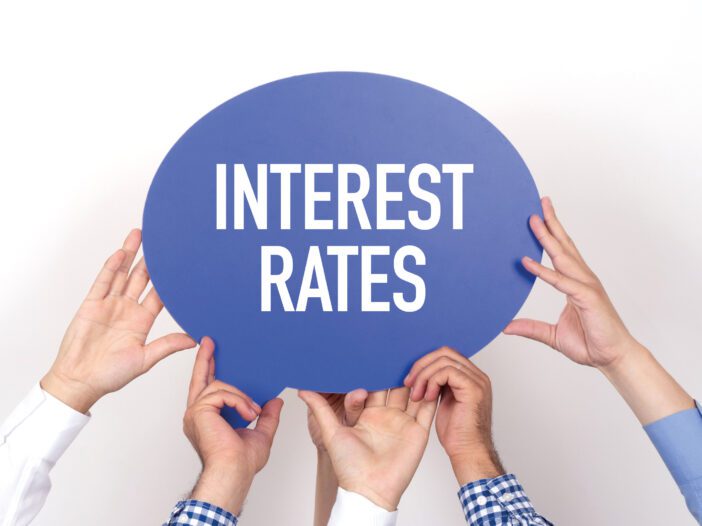It’s fitting the Reserve Bank’s first interest rate raise since June coincided with the Melbourne Cup.
It’s the closest thing macroeconomics has to gambling.
Macro traders keen on horses got a double shot of speculating on Tuesday. But Wednesday brings the bleary-eyed fallout.
I know at least one person is fuming at the RBA.
Our editorial director Greg Canavan said on last week’s episode of What’s Not Priced In that another hike was absurd.
But here we are.
Yes, the rate hike was expected.
But anticipation doesn’t sweeten the bitter pill mortgage holders are about to swallow.
Yet should the hike worry investors?
Before I get to that, let’s briefly unpack the RBA’s decision.
RBA not pleased with pace of deflation
The last few statements following the RBA Board’s decisions have largely been facsimiles.
No major edits or insertions. A copy-paste job.
Michele Bullock’s statement on Tuesday had major work done, though.
A whole paragraph was cut, another added.
The Reserve Bank’s inflation forecasts were the biggest change.
Bullock admitted inflation is ‘proving more persistent than expected a few months ago’. Progress to cool inflation ‘looks slower than earlier expected’, too.
September’s CPI quarterly drove the RBA to rethink its forecasts.
The central bank now expects headline inflation to be around 3.5% by the end of 2024 and near 3% by the end of 2025.
Inflationary discomfort is dragging on. Bullock said the ‘risk of inflation remaining higher for longer has increased’.
What hasn’t increased is the expectation of more hikes.
The market took Tuesday’s decision on the chin.
The Aussie 10-Year bond yield fell slightly overnight to 4.69%. And the Aussie dollar fell 0.80% against the USD.
Traders don’t see further hikes ahead because of one word change.
October’s statement ended with the caution that ‘some further tightening of monetary policy may be required’.
November’s statement changed to ‘whether some further tightening of monetary policy is required’ will rest on incoming data.
Westpac’s new chief economist Luci Ellis, a former RBA veteran, interpreted this thus:
‘This reads as the Board hoping not to have to raise rates again, but being very willing to do so if things change. There is not enough new information between now and the December meeting to drive a change in view.’
With her three-decade stint at the Bank, expect Ellis to become the next RBA whisperer.
What’s up is down, what’s down is up…
If the market runs with Ellis’s take that the RBA won’t want to raise again, Aussie bond yields may start falling.
US bond yields already are.
And the market is assuming falling bond yields are bullish for stocks.
Which makes me wonder.
Can a bad sign for the economy be a good sign for stocks?
That seems to be the predominant thinking lately.
In 2023, markets cheer economic bad news and fear good economic news.
Last week, the Wall Street Journal reported that a ‘sharp US hiring slowdown … helped extend a furious market rally’.
Why? A hiring pullback is likely to ‘bring the Federal Reserve’s historic interest rate increases to an end’.
Markets seem to operate under the rubric that what leads to lower rates is good; what leads to higher rates is bad.
Higher bond yields, more pressure on stocks. Boo!
Lower bond yields, less pressure on stocks. Yay!
But it can’t be that simple.
I’ve said this before: what causes rates to fall matters more than the fall itself.
Interest rates may fall because aggregate demand is plummeting. Yields may fall because economic activity is stalling.
Neither is good for corporate earnings.
Interest rates and business performance
Now, onto the earlier question. Should investors care about interest rates?
As much as good businesses should. That is, little. With a caveat.
Rising interest rates are a cover for bad businesses and a nothingburger for good businesses.
Struggling firms can pin any problem on rates and hope enough investors fall for it.
Quality firms don’t need scapegoats: good performance encourages honesty.
Let’s consult some business strategy books. Books on competition and how to avoid it or crush it.
Contemporary Strategy Analysis by Robert M. Grant mentions interest rates exactly zero times.
David Besanko’s well-regarded Economics of Strategy mentions interest rates exactly three times. Each mention focused on private corporate bonds.
Michael Porter’s iconic Competitive Strategy mentioned interest rates once, in this sentence:
‘Complementary products should be viewed broadly. For example, credit at prevailing interest rates is a complementary product to purchases of durable goods.’
The father of competitive strategy paid no attention to interest rates at all.
Now let’s turn to less academic texts. Works by investment practitioners, preferably.
Bruce Greenwald’s Competition Demystified mentions rates five times. All incidentally.
Morningstar’s Why Moats Matter mentions interest rates four times. Only one mention was significant. And here’s the aforementioned caveat.
Interest rates matter to businesses whose business is interest rates. Banks, financial services firms, REITs, etc.
For other industries, rates are tangential to good business performance.
They’re not what good managers think about or what good strategy builds around.
But the market obsesses about them. Sometimes to your benefit.
Greg summed it up well for The Insider earlier this week:
‘But as always, have a focus on value. There are plenty of good stocks on the ASX trading cheaply right now. Notwithstanding the recent rally, they may get cheaper as the RBA fights inflation with a blunt instrument.
‘But the opportunity to buy good stocks at good prices doesn’t come around often. Don’t let the RBA distract you while the sale is on.’
Don’t let the RBA distract you!
Regards,
 |
Kiryll Prakapenka,
Editor, Fat Tail Daily

